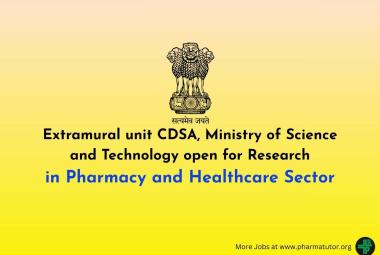{ DOWNLOAD AS PDF }
ABOUT AUTHORS:
Suresh Rewar1*, Dashrath Mirdha2, Prahlad Rewar3
1Department of pharmaceutics, Rajasthan University of Health Sciences, Jaipur, Rajasthan,
2Dr. Sarvepali Radhakrishnan Rajasthan Ayurved University, Jodhpur, Rajasthan, India
3Jawaharlal Nehru Medical College, Ajmer, Rajasthan, India
sureshrewar1990@gmail.com
ABSTRACT
A severe viral illness caused by a newly discovered coronavirus was first reported in the Middle East in 2012. The virus has since been named the Middle East respiratory syndrome coronavirus (MERS-CoV). MERS-CoV cases have been reported in several countries around the world in travelers from the Middle East., A substantial number of Indians live and work in Gulf countries. People from India also travel to Saudi Arabia as Pilgrims to Hajj. The illness has a high mortality rate. Limited human-to-human transmission has occurred including transmission to health care workers. The source of the virus remains unclear, but camels are a possible source. Since April 2012 and as of 20 February 2015, 1042 cases (including 419 deaths) of Middle East respiratory syndrome coronavirus (MERS-CoV) have been reported by local health authorities worldwide. Laboratory confirmation of MERS-CoV infections to date has largely been by real-time reverse transcription polymerase chain reaction (rRT-PCR) of lower respiratory tract specimens. Neither a vaccine nor effective therapy against the virus is available. Treatment consists of limited to supportive care, including mechanical ventilation for respiratory failure and/or hemodialysis in the setting of renal failure. Therapeutic modalities based on monoclonal antibodies (mAbs) have shown clinical success in the treatment of many diseases.
[adsense:336x280:8701650588]
REFERENCE ID: PHARMATUTOR-ART-2356
|
PharmaTutor (Print-ISSN: 2394 - 6679; e-ISSN: 2347 - 7881) Volume 3, Issue 8 How to cite this article: S Rewar, D Mirdha, P Rewar; Middle East Respiratory Syndrome Coronavirus: An Emerging Infection; PharmaTutor; 2015; 3(8); 38-41 |
INTRODUCTION
Middle East Respiratory Syndrome (MERS) is an illness caused by a virus (more specifically, a coronavirus) called Middle East Respiratory Syndrome Coronavirus (MERS-CoV). A novel coronavirus causing severe respiratory infection was first described in September 2012 [1]. MERS-CoV was first reported in September 2012 in samples obtained from a Saudi Arabian businessman who died from acute respiratory and renal failure. MERS affects the respiratory system (lungs and breathing tubes). Most MERS patients developed severe acute respiratory illness with symptoms of fever, cough and shortness of breath [2]. MERS- CoV is a beta-coronavirus, in the same family as SARS-CoV, and shares a probable origin from bats. The source of MERS-CoV infection and the mode of transmission have still not been confirmed, but camels are a possible source [3]. Most cases occurred in Saudi Arabia and to a lesser extent the United Arab Emirates, still further 11 countries in Europe, Asia and North Africa have reported cases linked to the Arabian Peninsula. Since April 2012 and as of 20 February 2015, 1042 cases (including 419 deaths) of MERS-CoV have been reported by local health authorities worldwide. The incidence of MERS-CoV cases has been on an increase in Saudi Arabia since Dec. 2014 [4]. People who may be at increased risk for MERS include recent travelers from the Arabian Peninsula, close contacts of travelers from the Arabian Peninsula, A substantial number of Indians live and work in Gulf countries. People from India also travel to Saudi Arabia as Pilgrims to Hajj.
[adsense:468x15:2204050025]
VIROLOGY
Coronaviruses (CoVs) infect and cause disease in a wide variety of species, including bats, birds, cats, dogs, pigs, mice, horses, whales, and humans. Coronaviruses are enveloped single-stranded positive-sense RNA viruses with genomes of 25 to 32 kb [5], a genus within the Coronaviridae family are pleomorphic, enveloped viruses. The novel virus is a representative of a new, yet-to-be-established species in lineage C of the genus Betacoronavirus, which currently includes the species Tylonycteris bat coronavirus HKU4and Pipistrellus bat coronavirus HKU5 [1].

Figure: 1. Middle East Respiratory Syndrome Coronavirus [6]
EPIDEMIOLOGY
After careful consideration and broad consultation, the Coronavirus Study Group has decided to call the new coronavirus Middle East respiratory syndrome coronavirus (MERS-CoV). Primary infections, to which all cases were linked directly or indirectly, occurred in Middle Eastern countries including Saudi Arabia, Qatar, Jordan, Oman and United Arab Emirates and subsequently spread to United Kingdom, United States, Tunisia, France, Italy and Germany with Egypt and African countries. [7]. As 24 July 2013, a total of 90 confirmed cases of MERS-CoV infection have been reported to the World Health Organization (WHO), including 45 deaths [1]. New data suggest that human MERS-CoV infection was transmitted through close contact with an infected camel. A 43 year old previously healthy Saudi man at Jeddah who died of laboratory confirmed MERS-CoV infection after close contact with camels that had rhinorrhea. Since April 2012 and as of 20 February 2015, 1042 cases (including 419 deaths) of Middle East respiratory syndrome coronavirus have been reported by local health authorities worldwide. The incidence of MERS-CoV cases has been on an increase in Saudi Arabia since Dec. 2014 [4].
TRANSMISSION
MERS-CoV has spread from ill people to others through close contact, such as caring for or living with an infected person. Infected people have spread MERS-CoV to others in healthcare settings, such as hospitals.Health care workers should be reminded of the importance of systematic implementation of infection-prevention and infection control measures. [8]. The source of MERS-CoV infection and the mode of transmission have still not been confirmed. The transmission pattern observed in early 2014, which showed increased transmission from a primary animal source, most likely camels [3, 7]. The route of transmission of MERS-CoV from camels to humans remains to be identified [7].

Figure: 2.Transmission of MERS-COV [6]
SYMPTOMS & COMPLICATIONS
Most people confirmed to have MERS-CoV infection have had severe acute respiratory illness with symptoms of: fever, cough, shortness of breath. Some people also had gastrointestinal symptoms including diarrhea and nausea/vomiting [1-2]. The most common presenting Symptoms include fever, cough, Shortness of breath, and gastrointestinal symptoms presented with abnormal chest radiographs. Patients with hypertension, diabetes, cardiomyopathy, chronic renal failure, malignancy, and decreased immunity appear to be at a higher risk of developing severe disease [2].
DIAGNOSIS
Laboratory confirmation of MERS-CoV infections to date has largely been by real-time reverse transcription polymerase chain reaction (rRT-PCR) of lower respiratory tract specimens, which can be positive from nasopharyngeal aspirate, sputum, tracheal aspirate, and urine specimens [3]. Routine confirmation of cases of MERS-CoV infection is based on detection of unique sequences of viral RNA by real-time reverse-transcription polymerase chain reaction (r-RT-PCR) with confirmation by nucleic acid sequencing. Performed RT-PCR assays on RNA that was extracted from upper respiratory tract swabs, with screening for the MERS-CoV genomic region upstream of the envelope gene (upE) and within open reading frame (ORF) 1a,Confirmation of upE results by ORF1a detection involved the re extraction of RNA from the original samples [8].
TREATMENT
The outbreak of MERS-CoV poses a serious threat to global public health and highlights an urgent need for the development of effective therapeutic and prophylactic agents to treat and prevent MERS-CoV infection. There is no specific antiviral treatment recommended for MERS-CoV infection. Individuals with MERS can seek medical care to help relieve symptoms. For severe cases, current treatment includes care to support vital organ functions. Therapeutic modalities based on monoclonal antibodies (mAbs) have shown clinical success in the treatment of many diseases. Treatment with ribavirin and IFN-a2b may be effective in patients infected with MERS CoV. MERS-CoV is more sensitive to IFN treatment than are other coronaviruses like SARS-CoV [9]. Treatment consists of limited to supportive care, including mechanical ventilation for respiratory failure and/or hemodialysis in the setting of renal failure. Widely disparate agents including chloroquine, chlorpromazine, loperamide, lopinavir, cyclosporine, and mycophenolic acid have in vitro activity against MERS-CoV [10].
PREVENTION
WHO recommends that probable and confirmed cases should be admitted to adequately ventilate single rooms or airborne precaution rooms? Healthcare workers caring for probable or confirmed cases of MERS-CoV infection should use contact and droplet precautions (medical mask, eye protection – i.e. goggles or face shield -gown and gloves in addition to standard precautions. Airborne precautions should be applied when performing aerosol-generating procedures. WHO continues to recommend that travelers to countries in or near the Arabian Peninsula protect themselves from respiratory diseases, including MERS, by washing their hands often and avoiding contact with persons who are ill [7].
CONCLUSION
The Middle East Respiratory Syndrome Coronavirus is a highly pathogenic emerging respiratory virus that has caused a small but lethal epidemic centered in Saudi Arabia but capable of limited person to person spread. Currently, health care associated transmission plays a pivotal role in the evolution of the MERS-CoV epidemic in countries in the Arabian Peninsula. Recent advances in epidemiological and molecular surveillance techniques have made some improvements in our ability to manage the public health response to such viruses, but many aspects remain unknown. The outbreak of MERS-CoV poses a serious threat to global public health and highlights an urgent need for the development of effective therapeutic and prophylactic agents to treat and prevent MERS-CoV infection.
ACKNOWLEDGEMENTS
The authors reported no conflict of interest. The authors alone are responsible for the content and writing of the paper and no funding has been received on this work. Ethical Approval was not required.
REFERENCES
1. Omrani AS, Matin MA, Haddad Q, Al-Nakhli D, Memish ZA, and Albarrak AM. A family cluster of Middle East Respiratory Syndrome Coronavirus infections related to a likely unrecognized asymptomatic or mild case; Int J Infect Dis. 2013;17(9):e668-72.
2. Memish ZA, Zumla AI, Al-Hakeem RF, Al-Rabeeah AA, Stephens GM. Family Cluster of Middle East Respiratory Syndrome Coronavirus Infections; N Engl J Med. 2013; 368(26):2487-94.
3. Leung CH, Gomersall CD. Middle East respiratory syndrome; Intensive Care Med. 2014; 40(7):1015-7.
4. European Centre for Disease Prevention and Control (ECDC), severe respiratory diseases associated with Middle East respiratory syndrome coronavirus (MERS-CoV); Fourteenth update 20 Feb. 2015, Available at: ecdc.europa.eu/en/publications/Publications/MERS_update_14-Feb2014.pdf[Accessed:Mar 15, 2015].
5. Van Boheemen S, de Graaf M, Lauber C, et.al. Genomic characterization of a newly discovered coronavirus associated with acute respiratory distress syndrome in humans; MBio. 2012; 3(6). pii: e00473-12.
6. Virology down under, Middle East respiratory syndrome coronavirus (MERS-CoV); Available: uq.edu.au/vdu/VDUMERSCoronavirus.htm [Accessed: March 12, 2015] Transmission at: virologydownunder.blogspot.in/2013/10/why-palm-tress-in-mers-cov-acquisition.html.
7. Al-Tawfiq JA, Memish ZA. Middle East respiratory syndrome coronavirus: epidemiology and disease control measures; Infect Drug Resist. 2014; 7:281-7.
8. Memish ZA, Zumla AI, Assiri A. Middle East Respiratory Syndrome Coronavirus Infections in Health Care Workers; N Engl J Med. 2013; 369(9):884-6.
9. Ying T, Li H, Lu L, Dimitrov DS, Jiang S. Development of human neutralizing monoclonal antibodies for prevention and therapy of MERS-CoV infections; Microbes Infect. 2015; 17(2):142-8.
10. Dyall J, Coleman CM, Hart BJ, et al. Repurposing of clinically developed drugs for treatment of Middle East respiratory syndrome coronavirus infection; Antimicrob Agents Chemother. 2014; 58(8): 4885-93.
NOW YOU CAN ALSO PUBLISH YOUR ARTICLE ONLINE.
SUBMIT YOUR ARTICLE/PROJECT AT editor-in-chief@pharmatutor.org
Subscribe to Pharmatutor Alerts by Email
FIND OUT MORE ARTICLES AT OUR DATABASE









